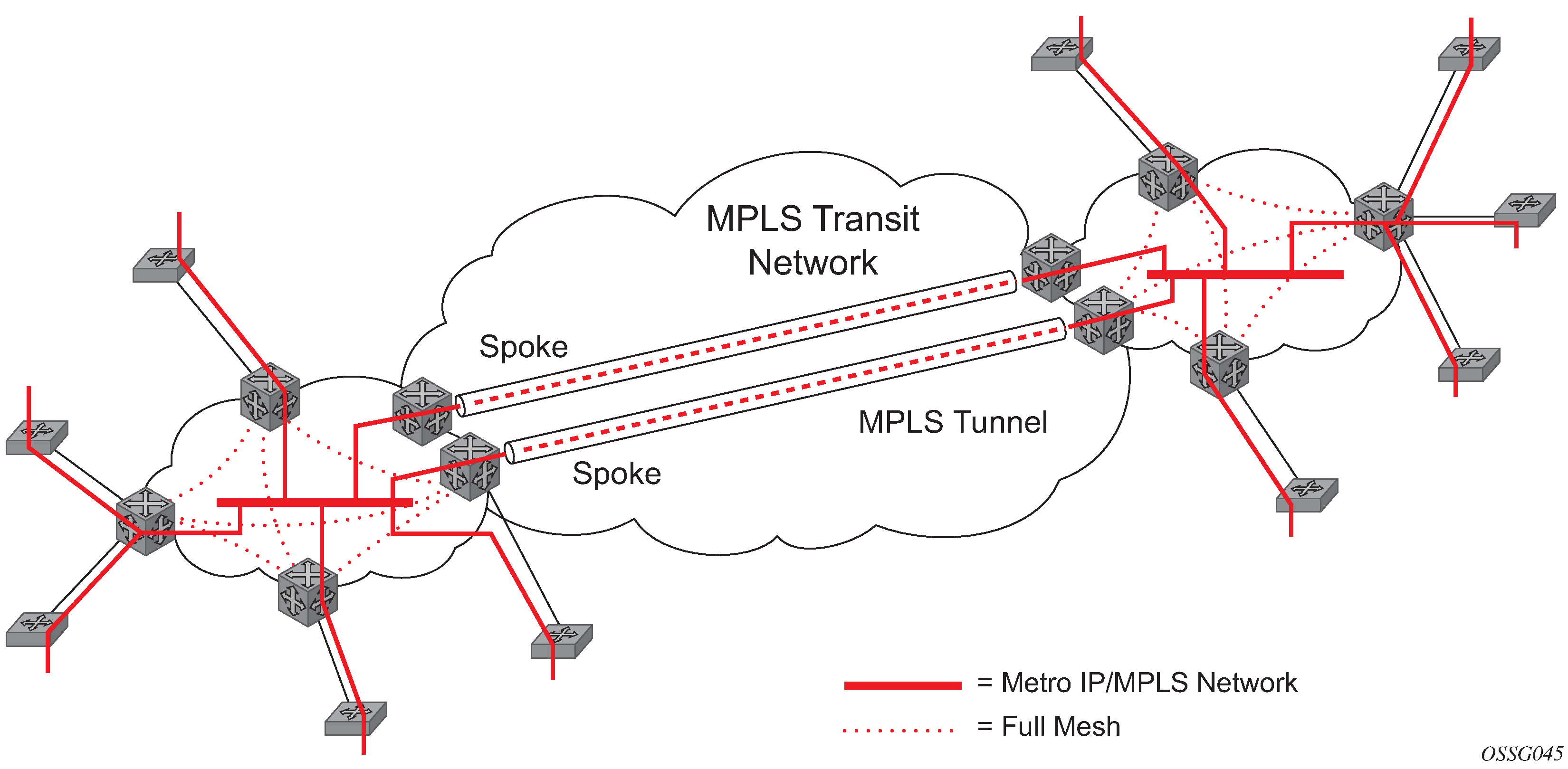When two or more meshed VPLS instances are interconnected by redundant spoke-SDPs (as shown in Figure 1), a loop in the topology results. To remove such a loop from the topology, STP can be run over the SDPs (links) that form the loop, such that one of the SDPs is blocked. As running STP in each and every VPLS in this topology is not efficient, the node includes functionality that can associate a number of VPLSs to a single STP instance running over the redundant SDPs. Therefore, node redundancy is achieved by running STP in one VPLS and applying the conclusions of this STP to the other VPLS services. The VPLS instance running STP is referred to as the ‟management VPLS” or M-VPLS.
If the active node fails, STP on the management VPLS in the standby node changes the link states from disabled to active. The standby node then broadcasts a MAC flush LDP control message in each of the protected VPLS instances, so that the address of the newly active node can be relearned by all PEs in the VPLS.
It is possible to configure two management VPLS services, where both VPLS services have different active spokes (this is achieved by changing the path cost in STP). By associating different user VPLSs with the two management VPLS services, load balancing across the spokes can be achieved.
